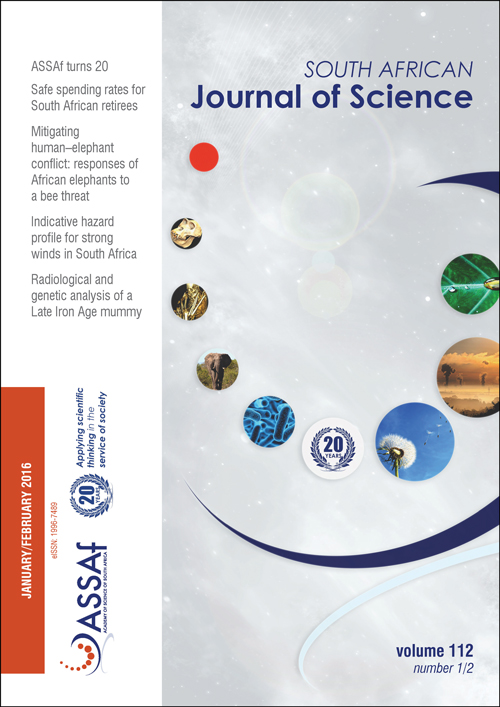Investigating atmospheric photochemistry in the Johannesburg-Pretoria megacity using a box model
DOI:
https://doi.org/10.17159/sajs.2016/2015-0169Keywords:
megacities, air pollution, photochemical box model, ozone, NOxAbstract
Urban air pollution has become a major concern over the past decades. One of the largest conurbations in Sub-Saharan Africa is developed around the cities of Johannesburg and Pretoria (Jhb-Pta megacity). In this study, a photochemical box model with a detailed representation of ozone (O3) formation chemistry was used to investigate the state of current air quality and photochemical processes in the Jhb-Pta megacity, as well as scenarios that could possibly mitigate air pollution. Results indicated that the Jhb-Pta megacity is within a VOC-limited (or NOx-saturated) regime. Major sources of NOx include transport from the Mpumalanga Highveld and local traffic emissions. O3 levels in the Jhb-Pta megacity will be more effectively reduced if VOC (volatile organic compound) emissions are decreased. A reduction of NOx emissions leads to an increase in O3 because of a decrease in titration through the reaction with NO. The same effect was observed in various cities worldwide where O3 levels increased when NOx emissions were reduced during emission control strategies. The effect of reducing vehicular emissions in the Jhb-Pta megacity on the production of O3 was also investigated. A significant increase of approximately 23 ppb O3 was observed when emissions of VOCs, NOx and CO were reduced by changing from Euro-0 to Euro-3 vehicles. It is therefore recommended that VOC emissions are decreased together with the implementation of Euro-3 and cleaner vehicles in the future.
Published
Issue
Section
License

All articles are published under a Creative Commons Attribution 4.0 International Licence
Copyright is retained by the authors. Readers are welcome to reproduce, share and adapt the content without permission provided the source is attributed.
Disclaimer: The publisher and editors accept no responsibility for statements made by the authors
How to Cite
- Abstract 609
- PDF 576
- EPUB 187
- XML 236












.png)